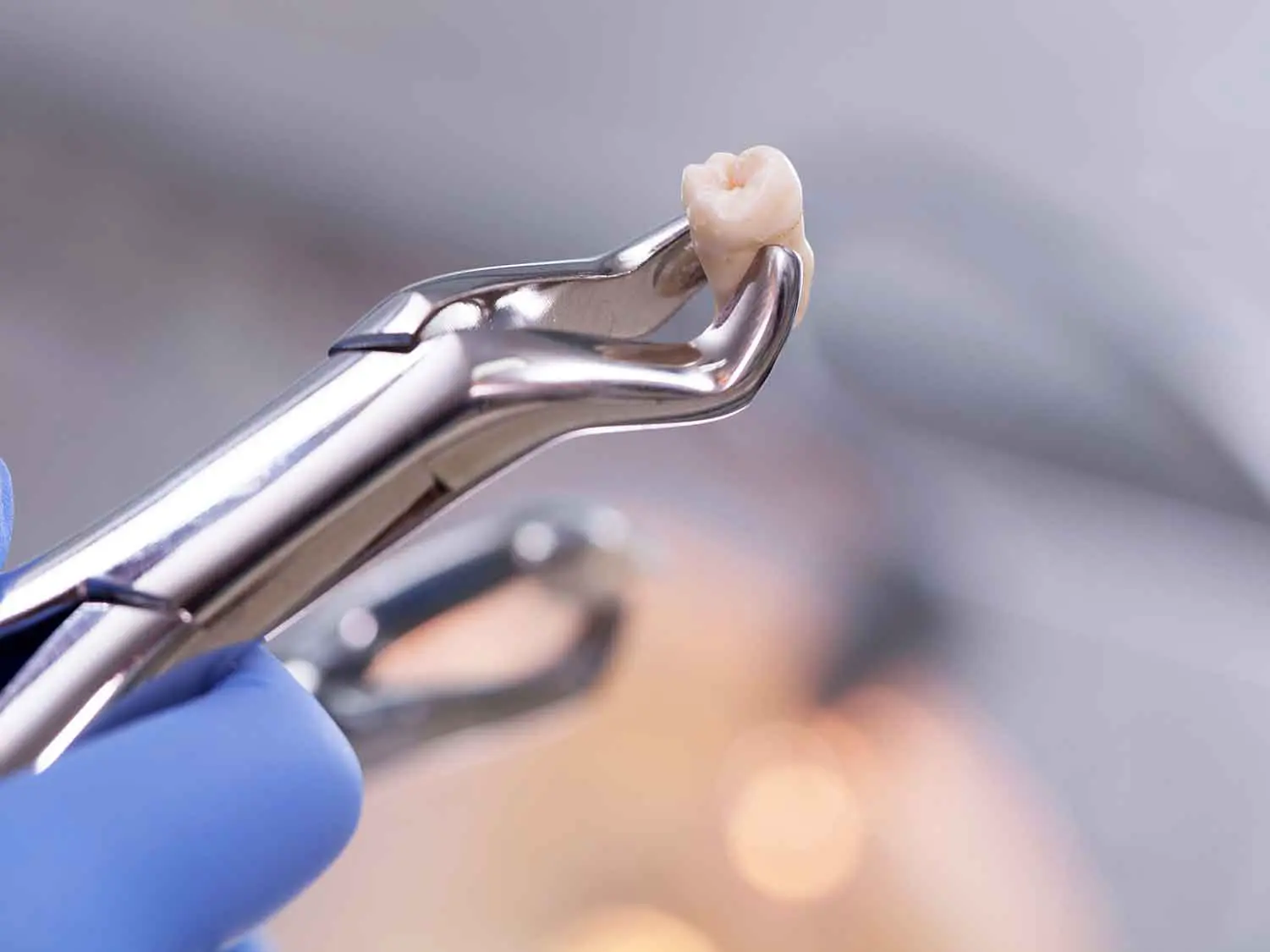When it comes to dental health, sometimes the best way to maintain a healthy smile is to part ways with a tooth. Whether it’s an emergency situation or a planned procedure, our expert team in Sumter, SC is here to provide proficient tooth extraction services that prioritize your comfort, health, and swift healing.
At Palmetto Family and Cosmetic Dentistry, we are not just about enhancing smiles, but also about ensuring the health and swift healing of your teeth post-procedures like tooth extractions.
Our dedicated team provides comprehensive care that supports tooth extraction healing, effectively managing the process to prevent complications such as infections. We specialize in treating cases of infected tooth extraction, employing advanced techniques to clear infections and promote healthy recovery.
Our clinic is equipped with state-of-the-art technology and staffed by compassionate professionals committed to your comfort and well-being. Trust us at Palmetto Family and Cosmetic Dentistry for your dental care needs, where we prioritize your health and recovery with every service we provide.
Types of Tooth Extraction
Tooth extraction is a common dental procedure where a tooth is taken out from its position in the jawbone socket. This process becomes imperative when a tooth suffers severe damage or decay beyond repair using methods like fillings or root canals. The following section will delve into various forms of tooth extraction.
1) Simple Extraction: This type of extraction is performed on teeth that are visible in the mouth and can be easily removed by grasping with forceps. The dentist will first numb the area with local anesthesia to minimize any discomfort. Then, using specialized tools, they will loosen the tooth and gently remove it from its socket.
2) Surgical Extraction: A surgical extraction is necessary when a tooth has not fully erupted or has broken off at the gum line. In this case, an incision may need to be made in the gum tissue to access the affected tooth. The procedure may also involve removing bone around the tooth or cutting it into smaller pieces for easier removal.
3) Impacted Tooth Extraction: This type of extraction is needed when a wisdom tooth (third molar) does not have enough room to fully emerge from the gums. These teeth can become trapped under the gum line and cause pain, infection, or damage to adjacent teeth if left untreated.
4) Wisdom Teeth Removal: As mentioned earlier, wisdom teeth often need to be extracted due to their lack of space and potential for causing problems. Most people have four wisdom teeth – two on top and two on bottom – but some may have fewer or even none at all!
5) Orthodontic Extraction: Occasionally, orthodontic treatment (braces/Invisalign) requires one or more extractions as part of creating space for proper alignment of teeth. These extractions are typically simple procedures done before braces are placed.
6) Emergency Extractions: In some cases where extensive damage has occurred or there’s an infection present, the tooth may need to be extracted on an emergency basis. This can provide immediate pain relief and prevent further complications.
Tooth extractions are commonly used as a last resort when all other treatment options have been exhausted. It is always important to discuss with your dentist the potential risks and benefits of extraction, as well as any alternative treatments that may be available.
Reasons for Tooth Extraction
Tooth extraction is a common dental procedure performed for various reasons, each aiming to protect or improve oral health. Understanding the rationale behind tooth extraction can help patients feel more at ease about the process and its importance in their overall dental care plan.
- Severe Decay or Infection: The most common reason for tooth extraction is severe decay that has damaged a tooth beyond repair. When a filling, crown, or root canal cannot save the tooth, extraction may be necessary to prevent the spread of infection.
- Periodontal (Gum) Disease: Advanced gum disease can cause the loosening of teeth by affecting the tissues and bone that support them. In such cases, extraction might be required to halt the disease’s progression and preserve the health of surrounding teeth.
- Overcrowding: Sometimes, teeth need to be removed to prepare for orthodontic treatment. Extracting one or more teeth can create the necessary space to align the remaining teeth properly.
- Impacted Teeth: Impacted teeth, commonly wisdom teeth, are trapped in the jawbone or gums and cannot erupt properly. They may cause pain, swelling, and even the misalignment of other teeth, making extraction a prudent choice.
- Risk of Infection: For patients undergoing chemotherapy or organ transplants, even the risk of infection in a particular tooth may warrant extraction as a preventive measure to keep the overall health intact.
- Fractured Teeth: Teeth severely damaged by trauma or accidents that cannot be reconstructed may need to be extracted to eliminate pain and prevent infection.
In every situation, pulling out a tooth is viewed as a final option once all alternative treatments have been considered.
At Palmetto Family and Cosmetic Dentistry, we focus on guaranteeing that patients get the most suitable and efficient care, striving to maintain natural teeth whenever feasible.
Benefits of Tooth Extraction
Tooth extraction, while often seen as a last resort in dental treatment, carries significant benefits that can contribute to long-term oral health and well-being. Understanding these advantages can help alleviate any apprehensions about the procedure and highlight its role in a comprehensive dental care plan.
- Alleviates Pain and Discomfort: One immediate benefit of tooth extraction is the relief from pain caused by severe decay, infection, or impacted teeth. In addition to relieving pain, this surgery is vital in warding off infections including abscesses and gum disease. Better health and a higher quality of life are possible outcomes when people’s teeth and gums are healthy and functioning normally again.
- Prevents the Spread of Infection: In cases of severe decay or gum disease, extraction plays a crucial role in preventing the infection from spreading to surrounding teeth and bone. By removing the affected tooth or tissue, the risk of complications is minimized, safeguarding overall oral health. This proactive approach not only preserves oral well-being but also contributes to reducing the likelihood of more serious health issues down the line.
- Addresses Overcrowding: Removing one or more teeth, a common dental procedure known as tooth extraction, can effectively resolve issues related to overcrowding in the mouth. By creating more space, the remaining teeth can align properly, leading to a harmonious and balanced dental arch.
This alignment not only contributes to an aesthetically pleasing smile but also plays a crucial role in improving bite function and maintaining optimal oral hygiene practices.
- Eliminates Disease: For teeth that are severely infected or affected by periodontal disease, extraction can halt the progression of these conditions, preserving the health of adjacent teeth and gums.
By removing the source of infection, extraction not only protects surrounding oral structures but also prevents the further spread of bacteria that could lead to more extensive dental issues. This proactive approach ensures the overall well-being of your oral health.
- Prepares for Further Treatment: Extractions play a crucial role in creating space for various essential dental procedures. They pave the way for orthodontic treatments, implant placements, or denture fittings. By facilitating these procedures, extractions contribute to a holistic approach to restoring oral health and enhancing aesthetics, ensuring a complete and well-rounded dental care experience.
- Improves Oral Hygiene: Eliminating hard-to-clean teeth, such as impacted wisdom teeth, simplified oral hygiene routines by making it easier to reach all areas during brushing and flossing. This proactive approach reduces the likelihood of developing cavities and gum disease, promoting better overall oral health.
At Palmetto Family and Cosmetic Dentistry, we prioritize patient education and comfort, ensuring that if tooth extraction is necessary, it is performed with the utmost care, and patients are fully informed of the benefits and aftercare procedures to support optimal healing and oral health.
What to Expect During Tooth Extraction Procedure
Undergoing a tooth extraction can be a source of anxiety for many patients, but understanding the procedure can help ease concerns. At Palmetto Family and Cosmetic Dentistry, our priority is to ensure you are comfortable and informed every step of the way.
Before the Procedure: An X-ray and comprehensive examination of your tooth and jawbone are taken first to determine its current state. The dentist will explain the reasoning behind the dental extraction and go over any alternatives that may be available.You’ll be asked about your medical history and any medications you take, to prepare for a safe procedure.
During the Procedure: Tooth extraction is performed under local anesthesia, which numbs the area around the tooth to be removed. For more complex cases or anxious patients, sedation options may be available. Once the area is numb, the dentist will use special tools to gently rock the tooth back and forth until it is loose enough to be removed. You may feel pressure but should not experience pain during the extraction.
After the Procedure: Post-extraction, you’ll receive detailed care instructions to ensure a smooth recovery. This includes advice on managing discomfort, promoting healing, and preventing infection. Over-the-counter pain relievers and cold compresses should alleviate the minor swelling and discomfort that is common. Rest is important, and you should avoid strenuous activity for a few days following the extraction.
At Palmetto Family and Cosmetic Dentistry, we’re committed to providing a supportive, transparent experience during your tooth extraction, ensuring your comfort and rapid recovery.
After Care Treatment For Tooth Extraction
Healing and avoiding problems after a tooth extraction are dependent on proper aftercare. At Palmetto Family and Cosmetic Dentistry, we want you to know how important it is to follow these steps so that your rehabilitation goes smoothly:
- Bite on a Gauze Pad: Gently bite on a gauze pad that has been placed over the extraction site right after it happens to help stop the bleeding. Your dentist will tell you how often to change the gauze.
- Apply Ice Packs: For the first day following your extraction, try applying an ice pack to your cheek for 10 minutes at hourly intervals to reduce swelling.
- Rest: Rest for at least 24 hours post-extraction and limit activity for the next couple of days. Use cushions to prop up your head so you don’t bleed to death.
- Avoid Suction: Do not use straws, smoke, or spit vigorously, as these actions can dislodge the blood clot forming in the socket, leading to dry socket, a painful condition.
- Soft Foods: Eat soft foods like yogurt, pudding, and soup. Allow the extraction site to heal before slowly reintroducing solid foods.
- Oral Hygiene: Try not to brush right on top of the extraction spot for at least a day after it’s done. After that, to alleviate swelling and avoid infection, gently rinse your mouth many times daily with warm salt water.
- Follow-Up: Make sure you recuperate properly by going to your dentist’s planned follow-up appointments.
Adhering to these aftercare instructions can significantly impact your comfort and recovery speed post-tooth extraction, helping you return to your normal routine as quickly as possible.
Experience Exceptional Dental Care with Us
If you’re in discomfort or need a tooth extraction, take steps for a healthier smile. At Palmetto Family and Cosmetic Dentistry, we provide compassionate care tailored to your needs. Our expert team will guide you through the process with comfort, ensuring a smooth recovery. Trust us for precise dental care.
Book your consultation today for expert tooth extraction services.

